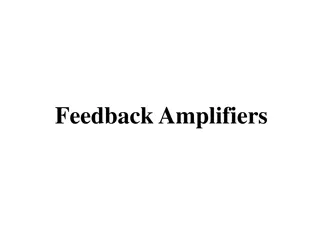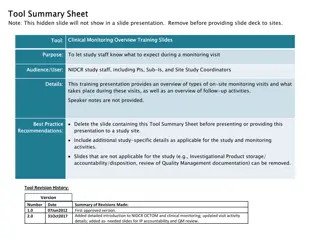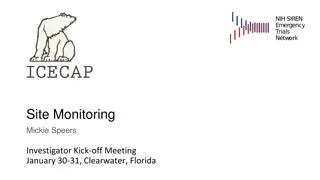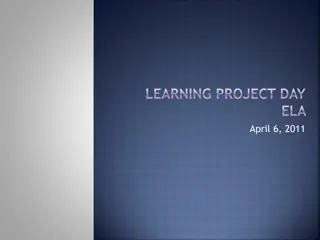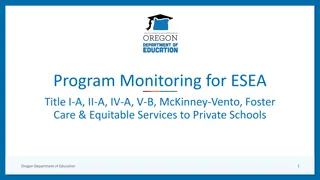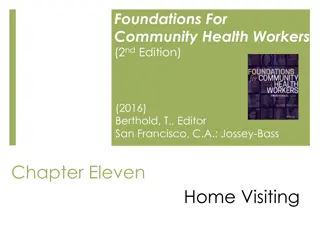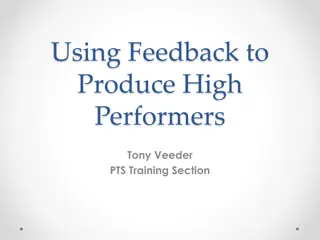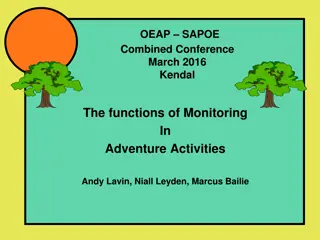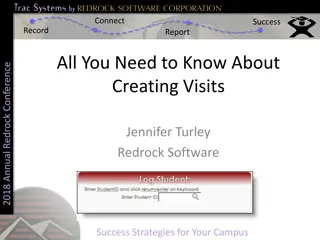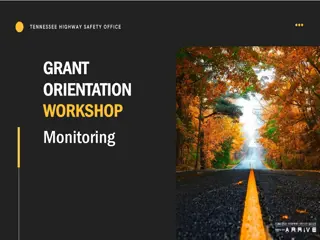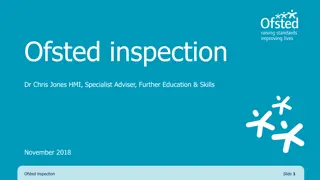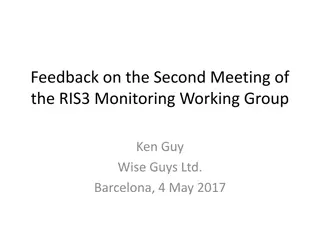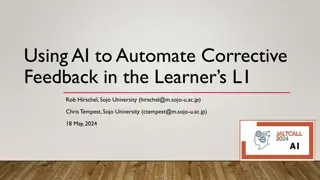Feedback on Practical Work and Monitoring Visits
Feedback on the monitoring visits shows generally positive outcomes with excellent practices observed. Centres are reminded to properly manage storage of material and maintain logs for instructions and documents. Additionally, the importance of lab books in enhancing candidates' performance is highlighted, with a few centres needing to improve their usage. Attention to detail is stressed in preparation for the upcoming practical examination dates in 2020.
Download Presentation

Please find below an Image/Link to download the presentation.
The content on the website is provided AS IS for your information and personal use only. It may not be sold, licensed, or shared on other websites without obtaining consent from the author.If you encounter any issues during the download, it is possible that the publisher has removed the file from their server.
You are allowed to download the files provided on this website for personal or commercial use, subject to the condition that they are used lawfully. All files are the property of their respective owners.
The content on the website is provided AS IS for your information and personal use only. It may not be sold, licensed, or shared on other websites without obtaining consent from the author.
E N D
Presentation Transcript
Feedback on the monitoring visits Generally very positive with excellent practice being seen. Storage of material A small number of centres are still not managing this correctly. Log needs to be kept - checking-out and / checking-in of the Instructions to teachers / exams officers document and the Setting up instructions document to science teachers / technicians. When not in use by the science teachers / technicians the Instructions to teachers / exams officers document and the Setting up instructions document must be returned to the exams officer for safe keeping and not stored in the lab.
Feedback on the monitoring visits Lab Books Excellent practice was seen in the majority of centres. Monitors were impressed by the way in which some centres had fully embraced the use of lab books. This will be advantageous to candidates in both practical and theory papers. Please note that lab books should be available for monitors to check on all assessment days. This includes the day of the practical analysis task. A small number of centres are not using lab books it is a compulsory requirement of the specification. These centres will have a revisit and if required malpractice procedures will be followed.
Feedback on the monitoring visits Generally very positive with excellent practice being seen. The survey (currently taking place) Information has been requested from exams officers. Please ensure this is returned as soon as possible in order to receive the Instructions to Teachers document in December. All centres requesting Day 2 of the Experimental Task will be contacted to confirm they absolutely require the assessment. There was a lower response rate than usual last year so please check that your centre has supplied us with the information.
GENERAL POINTS The Information from centres sheet which is found in the Setting up instructions document needs to be sent to the examiner with the completed examination papers. Please ensure that the teacher awarded marks are completed on the front of the exam booklets before they are sent to the Examiner. Allowing for Easter holidays aim is for the Unit 5 exam to be timetabled as late as we can prior to the main summer timetable starting. Ensure that all A2 topics with practical work in them are taught prior to the exam e.g. leave applications of reproduction, option topics to the end.
Practical Examination DATES 2020 Instructions to teachers / exam officers Sent to centres in January 2020 Setting up instructions Tuesday 21 April Experimental task Tuesday 28 April (Test 1) and Wednesday 29 April (Test 2) Test 2 is only available to centres that have large numbers of candidates and are unable to get all candidates through the test on day 1. Practical Analysis task Friday 1 May
Statistics Biology UNIT 5 Contact Details Liane Adams Biology Subject Officer 029 2026 5126 liane.adams@wjec.co.uk Maximum mark = 50 Mean mark = 32.1 (2018 = 31.6) Entry = 2436 (2017 = 2305) A B C D E Grade boundary 32 29 26 23 21 Lowri Evans Subject Support Officer 029 2026 5140 lowri.evans@wjec.co.uk Cumulative % at grade 56.2 75.9 89.1 94.5 97.0
The task was generally well done with candidates well prepared. It is vital that centres trial the investigation prior to the test day and submit a set of results in the correct format. Candidates must work individually, it is not acceptable to work in groups. It is acceptable to give unformatted results to candidates if they do not obtain all the results in a reasonable time. There are no marks awarded for the accuracy of results and papers are written so that candidates are not disadvantaged by the results they obtain Please ensure that the teacher awarded marks are completed. The contents of the experimental task are confidential and should not be divulged except to those concerned with the preparation of the assessment.
TABLE The rubric of the question asked candidates to record the percentage changes after each time interval in minutes, to 1 decimal place, and also the mean percentage changes. Headings: Many candidates did not include change in mass in their headings, especially when they included mean % change as a separate column. Units: Quite a number of candidates changed time to seconds even though the time intervals were given in minutes. Percentage change in grams was seen on many papers rather than just % or the word percentage. Data / Calculations / Mean: - Many candidates included the actual change in mass in their table and percentages were commonly calculated to 2 or more decimal places. - It was expected that candidates would calculate their percentage changes as negative numbers if mass decreased and positive numbers if the mass increased. Many calculated % change for the individual pieces of vegetable as being negative but then recorded mean % change as positive and vice versa.
Axis labels and units: Much improved on last year. Scales: Most included numbers at the origins of the axes. There were a surprising number who had no idea that negative numbers should go down from 0. Line: If a value is plotted at (0,0) then the line should connect to that point. However, if that value is not plotted then the line should not be extended to 0.
Percentage change some good responses, some lost the mark by referring to accuracy or reliability being improved. Range bars - many lost marks here by not explaining their significance Prediction - Issues with negative numbers or a lack of them led to problems for some candidates here. Inconsistent drying - Well done by most. Control experiment - Incorrect use of terminology cost marks here. Many referred to the cell membrane being denatured or damage to the cell wall rather than the cell membrane being destroyed / damaged.
ANALYSIS QUESTION The task was generally well done with candidates well prepared. However: Quality of expression was an issue for many candidates and many gave very generalised responses which did not gain credit. Validity as a term will not gain credit alone. Candidates need to explain why a certain factor would increase the validity of an experiment. In (a)(ii), it is vital that candidates use the information given in the question rather than memorising answers to previous exam questions, e.g. distance from sea! When adding data to a table candidates should take note of the number of significant figures already given. (c)(i) was poorly answered by the majority of candidates. It is a maths requirement that candidates understand when various statistical tests should be used. Null hypothesis: it was vital that the terms significant and mean were used.
MICROSCOPY QUESTION The stem states the source of this image i.e. the oviduct, so candidates should have been aware that these are cilia not microvilli. Most were able to accurately measure the width W, but an incorrect measurement only lost one mark, if the written working took into account the conversion to m and division by the magnification. Candidates frequently do not distinguish between microvilli, villi and cilia and so lost the mark in (c)(i) by citing parts of the small intestine for this answer.





